BLOG ENVY
How to create 'zones' in your open plan home
Personally I’m a big fan of open plan living; it has such a relaxed vibe which I love. This wasn’t always the case though! When we moved into our current house my husband was super keen to knock down the wall that divided our kitchen and dining room. I wasn’t so sure. I quite liked the idea of being able to make dinner, then close the door and hide away the chaos of my cooking in another room! Anyway, after a lot of debating I came round to his way of thinking, and I’m so glad I did. The result is a double-aspect kitchen-diner, filled with light throughout the day; an amazing space for socialising. And the mess in the kitchen? Just get a take-away instead. Problem = Solved.
Open plan living is fantastic, but successfully pulling off a multifunctional living space is no mean feat. Without proper planning, it can appear a little chaotic. Creating zones can add a sense of order and help you make the most of your home. Here are a few tips on how you could do this…
Lighting
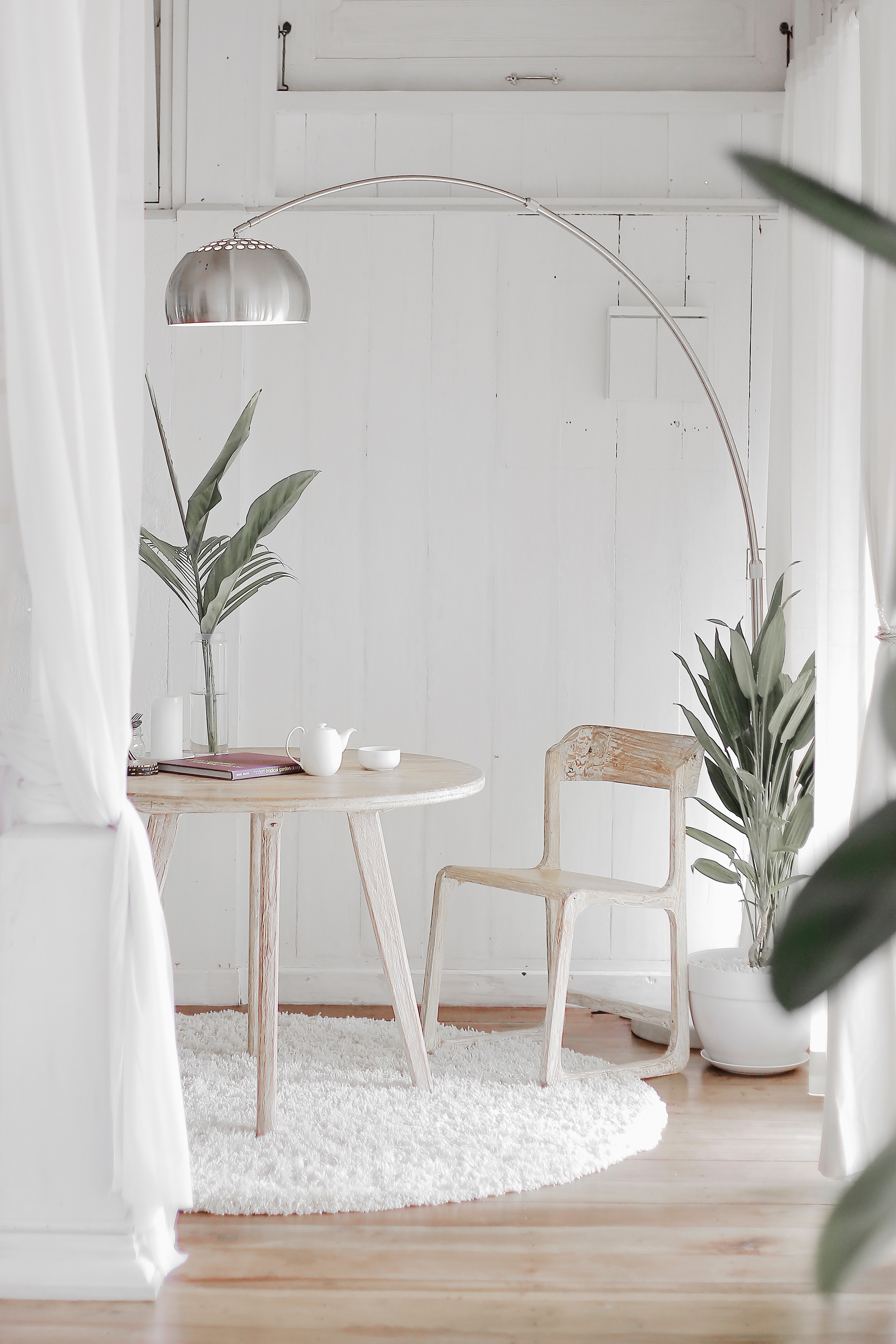
Lighting is often one of the last things you think about when furnishing your home, and it’s easy just to plonk a standard lamp in the corner of a room because it fits nicely in the space. But in an open plan living space lighting can be an excellent tool for defining different parts of the room by illuminating specific areas, such as a dining table. Taking this a step further, you could use a coloured bulb for an even stronger impact.
Co-ordinate your furniture
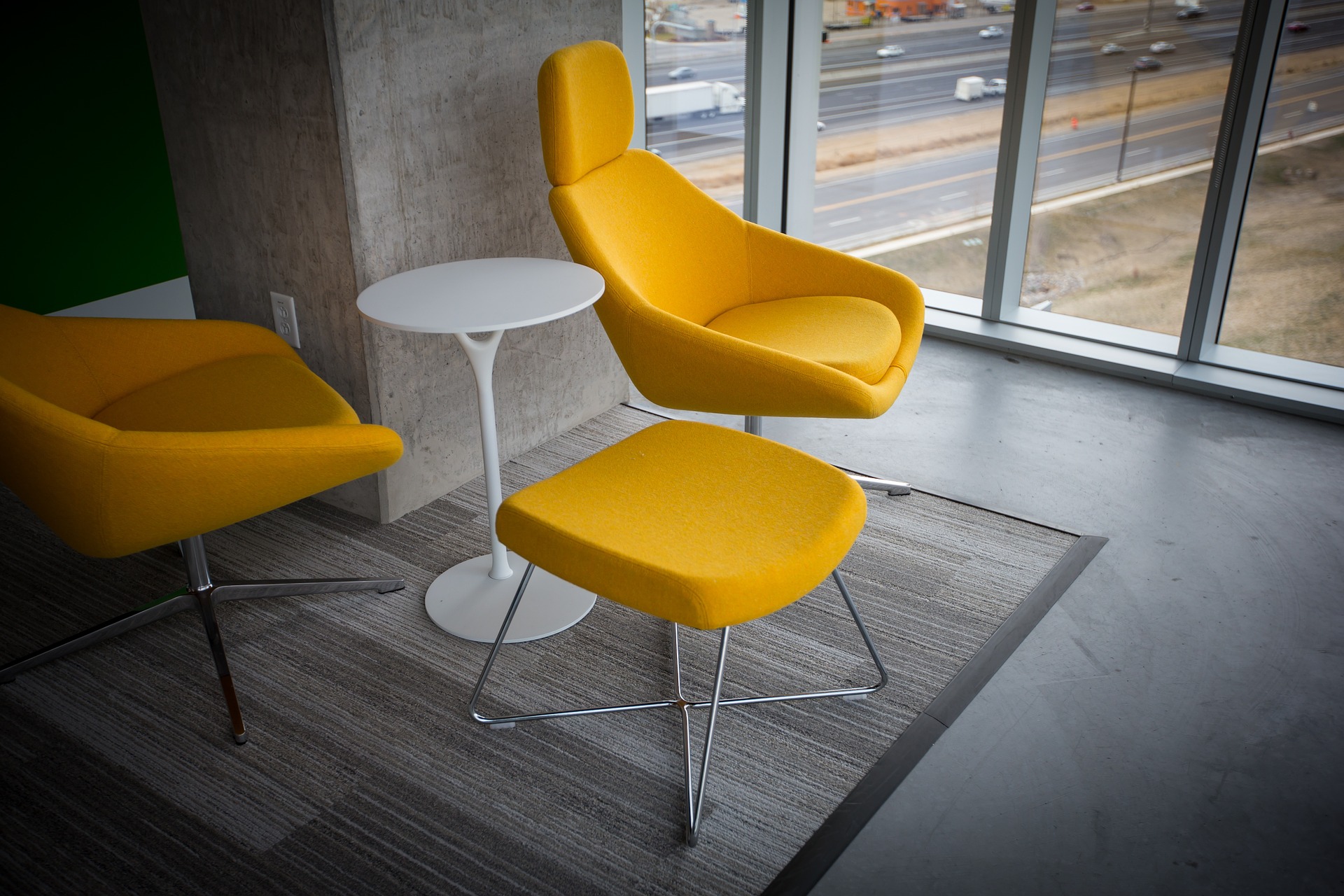
If your open plan living area is quite busy, try colour coding your furniture to help differentiate the zones. This works especially well with bold colours, but subtlety can still be just as effective. A similar effect can be achieved by co-ordinating materials, or even types of wood. Basically, you can take it as far as you want to!
Area rugs
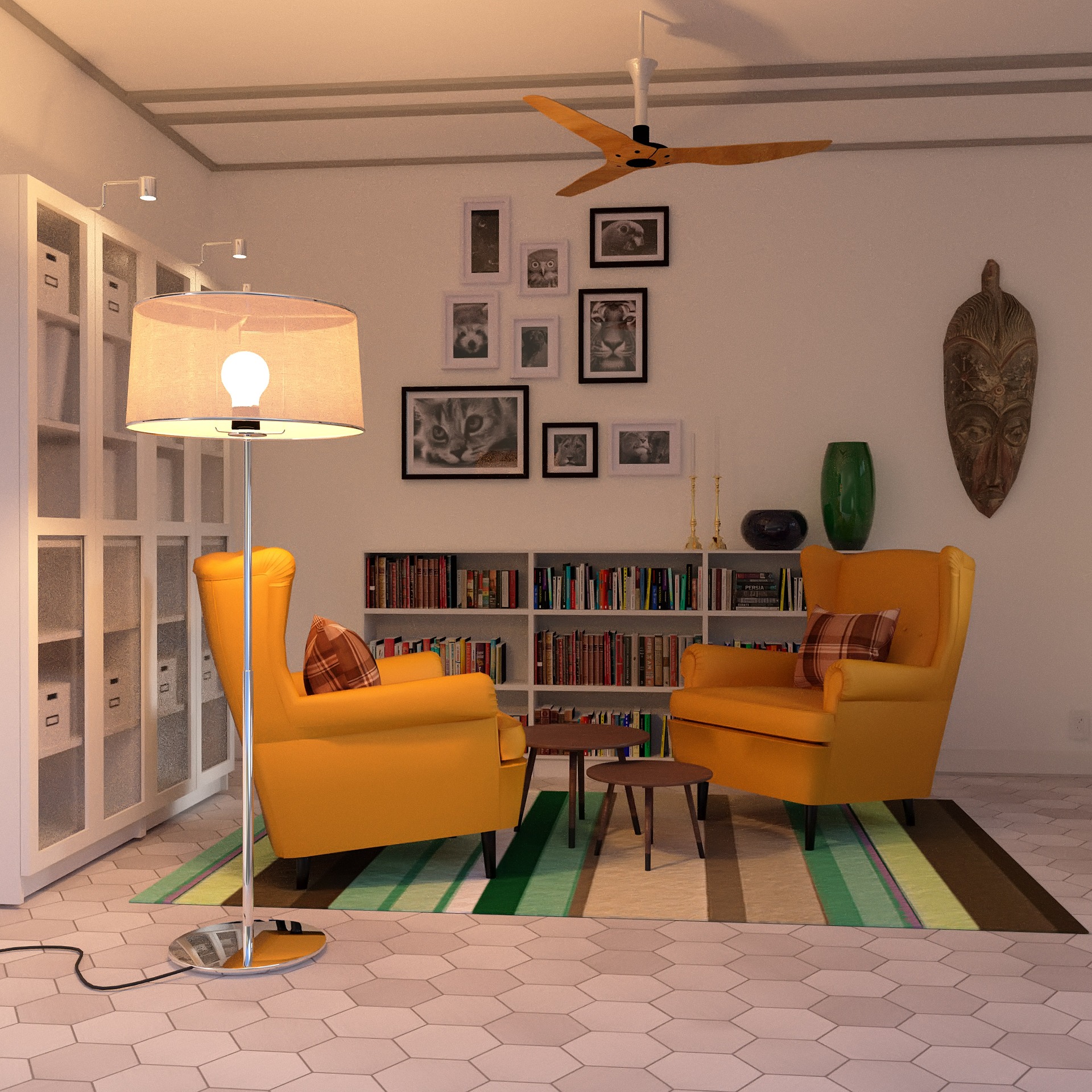
A change in flooring is a clear indicator of a zone within a room. As solutions go however, this one could be a bit expensive, and limited to those who own their home rather than renting. As an alternative, why not invest in a large rug? The end result is the same, but with the added bonus of being flexible. You can easily change up your look when you feel like it, and you can take the rug with you when you move. Win, win.
Wall art
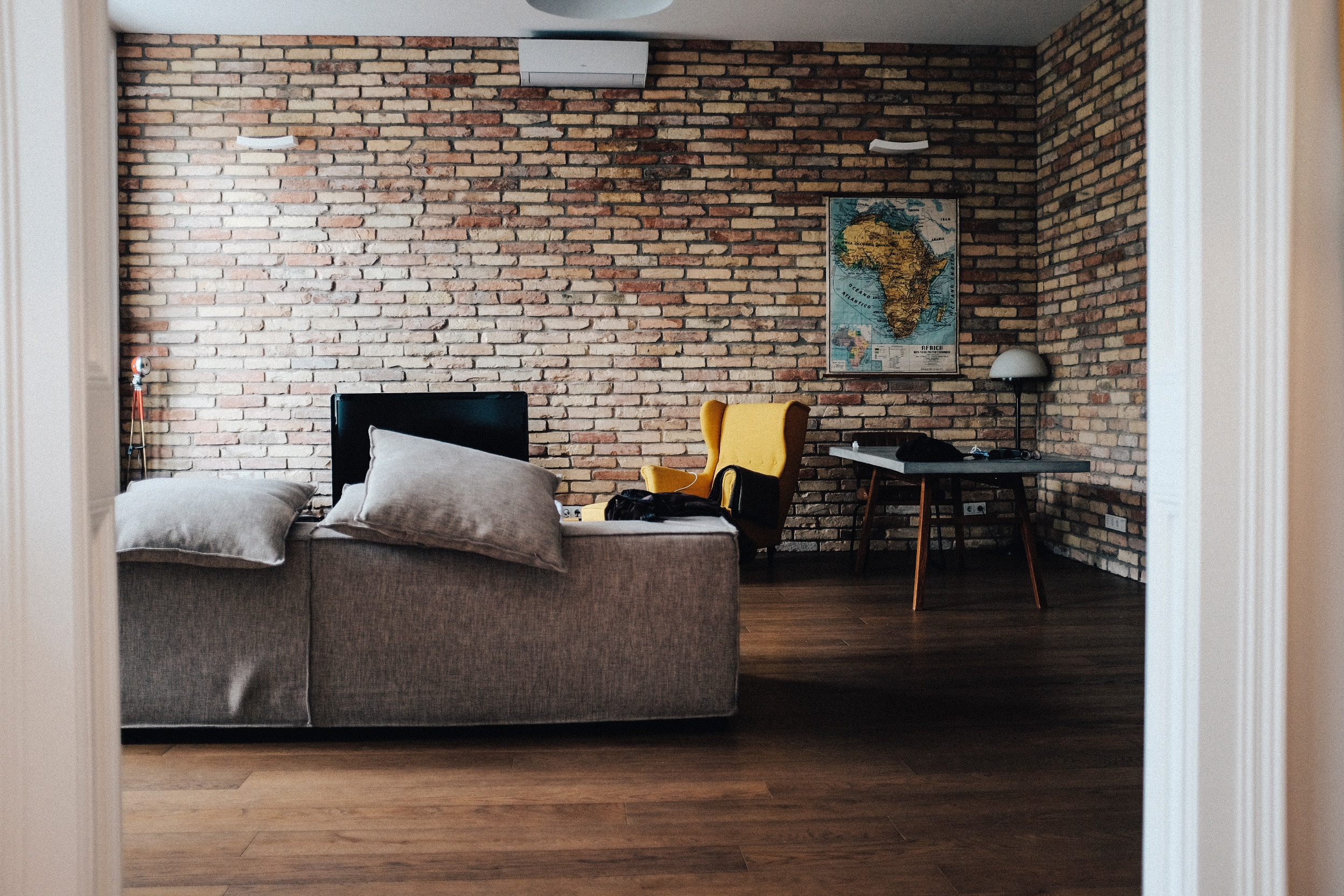
So you’ve considered the flooring and lighting to create your zones, but what about your walls? Positioning artwork in line with other furniture in that area will help to define it. The image above is a great example of how effective this can be.
Feature wallpaper
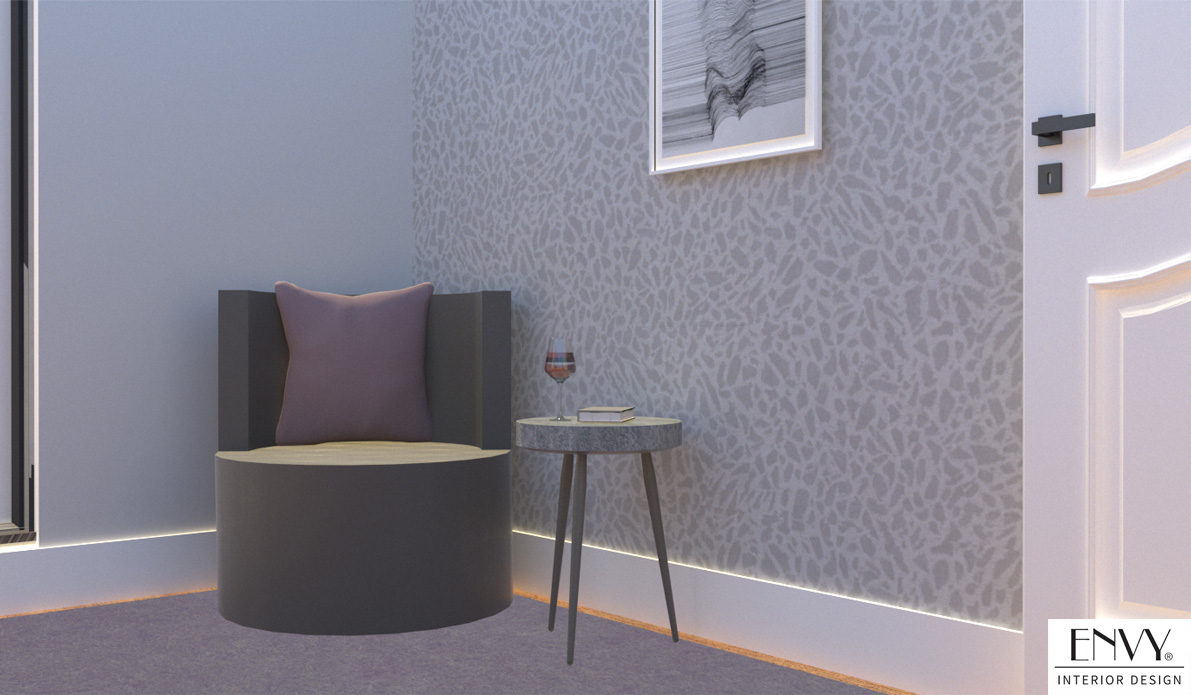
Even more effective than using wall art, you can clearly mark out a zone in your home by applying a feature wallpaper. In this instance, a reading area has been created in the corner of a dining room, as shown in this 3D Visualisation by Envy Interior Design. All of the walls are grey except in this corner, where the wallpaper, the positioning of furniture, the rug and wall art all contribute towards defining this space as being separate from the rest of the room.
Natural room dividers
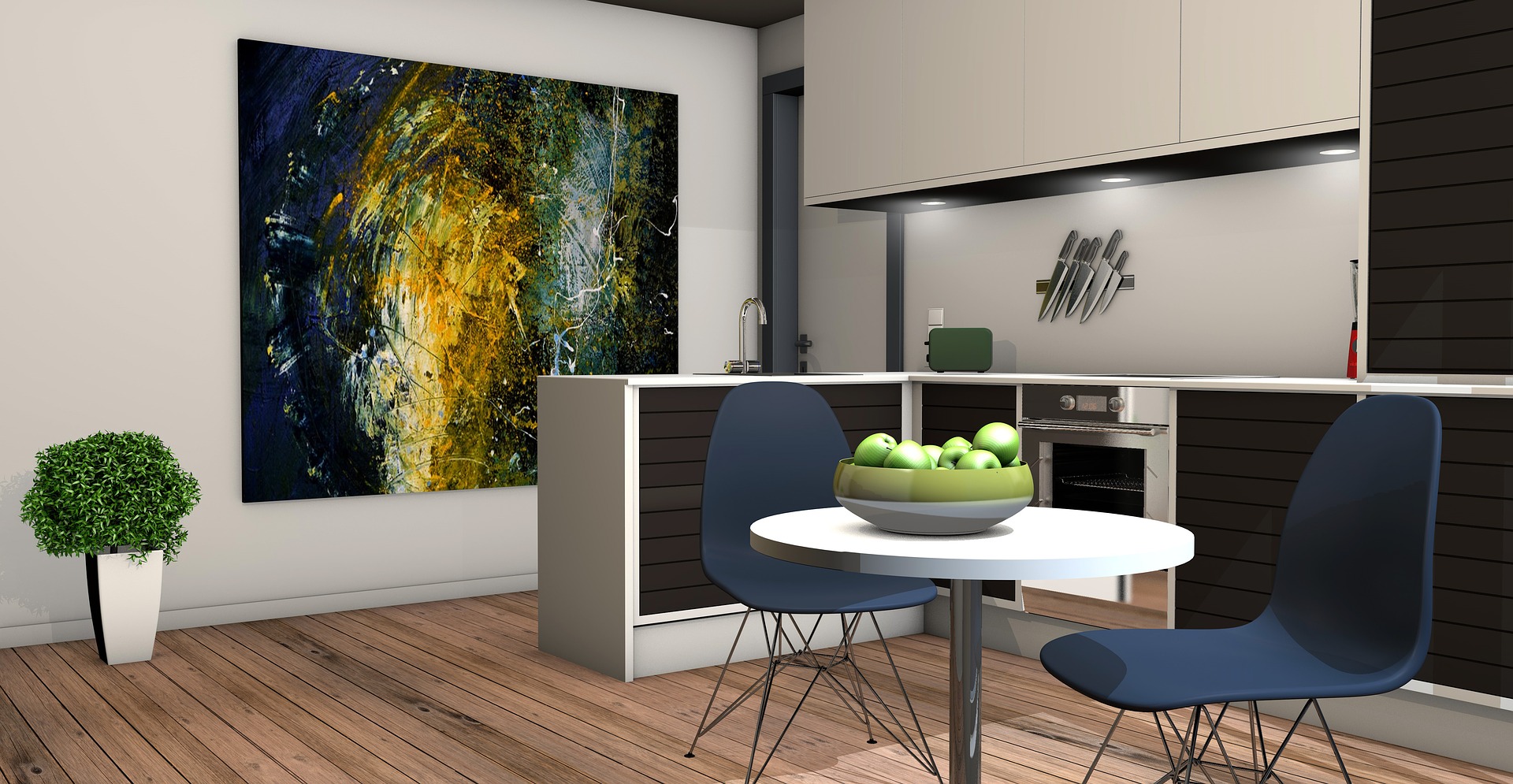
Kitchen units are great for doubling up as room dividers. You can position your work surfaces, or breakfast bar to create a natural walkway between areas, without being intrusive or overbearing. If you’re not sure how best to achieve this look, consult a professional who will help you to draw up your plans. Kitchen design companies and residential interior designers are able to advise you on how to get the most out of your space.
A little direction
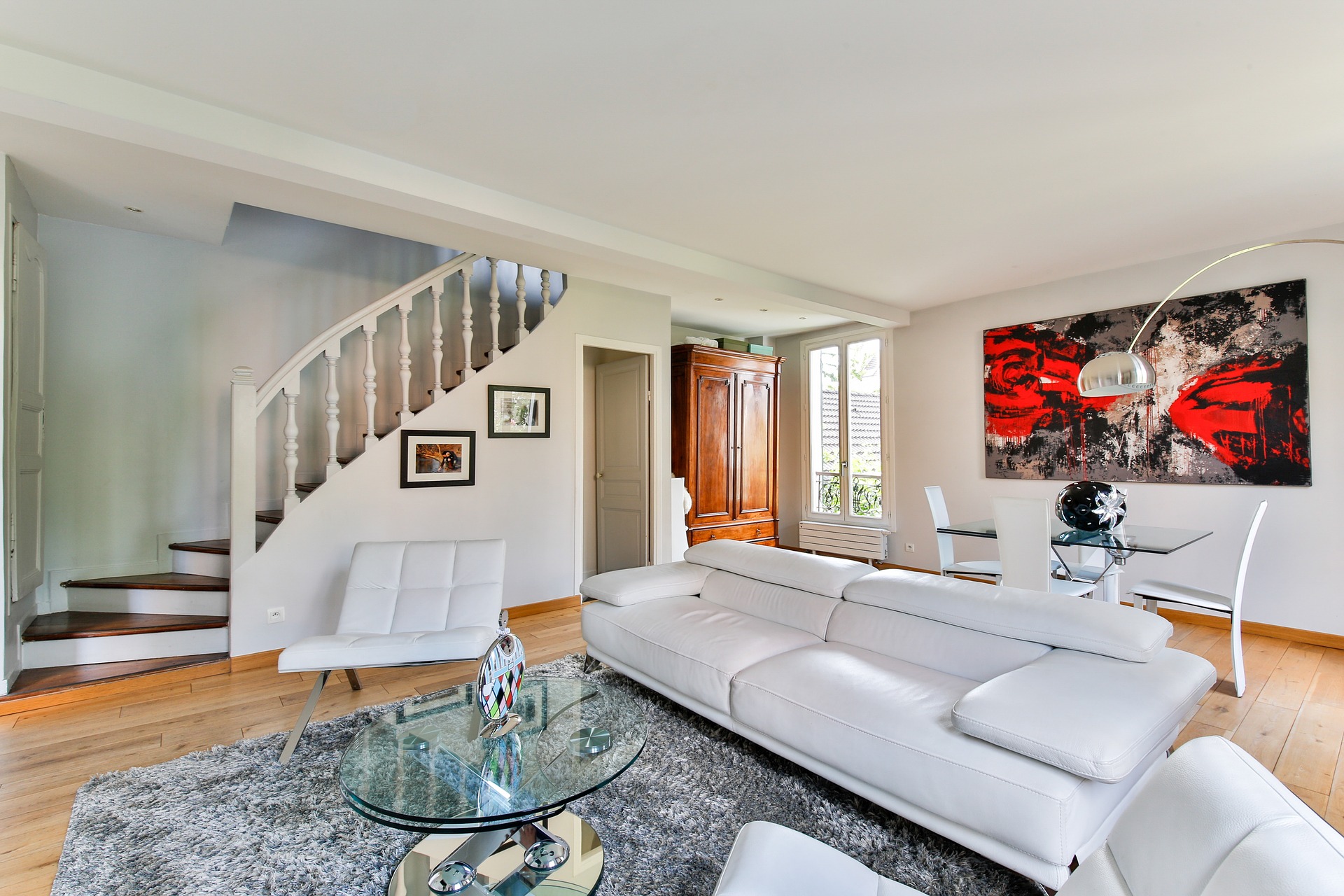
Your furniture can be positioned to act as the ‘walls’ around the different zones in your home. The clean, straight line of the back of your sofa in particular acts as a strong divider, as shown in the image above. All of the seating in this lounge area has been directed towards the central table, sectioning off the living / dining areas seamlessly.
Colour zones
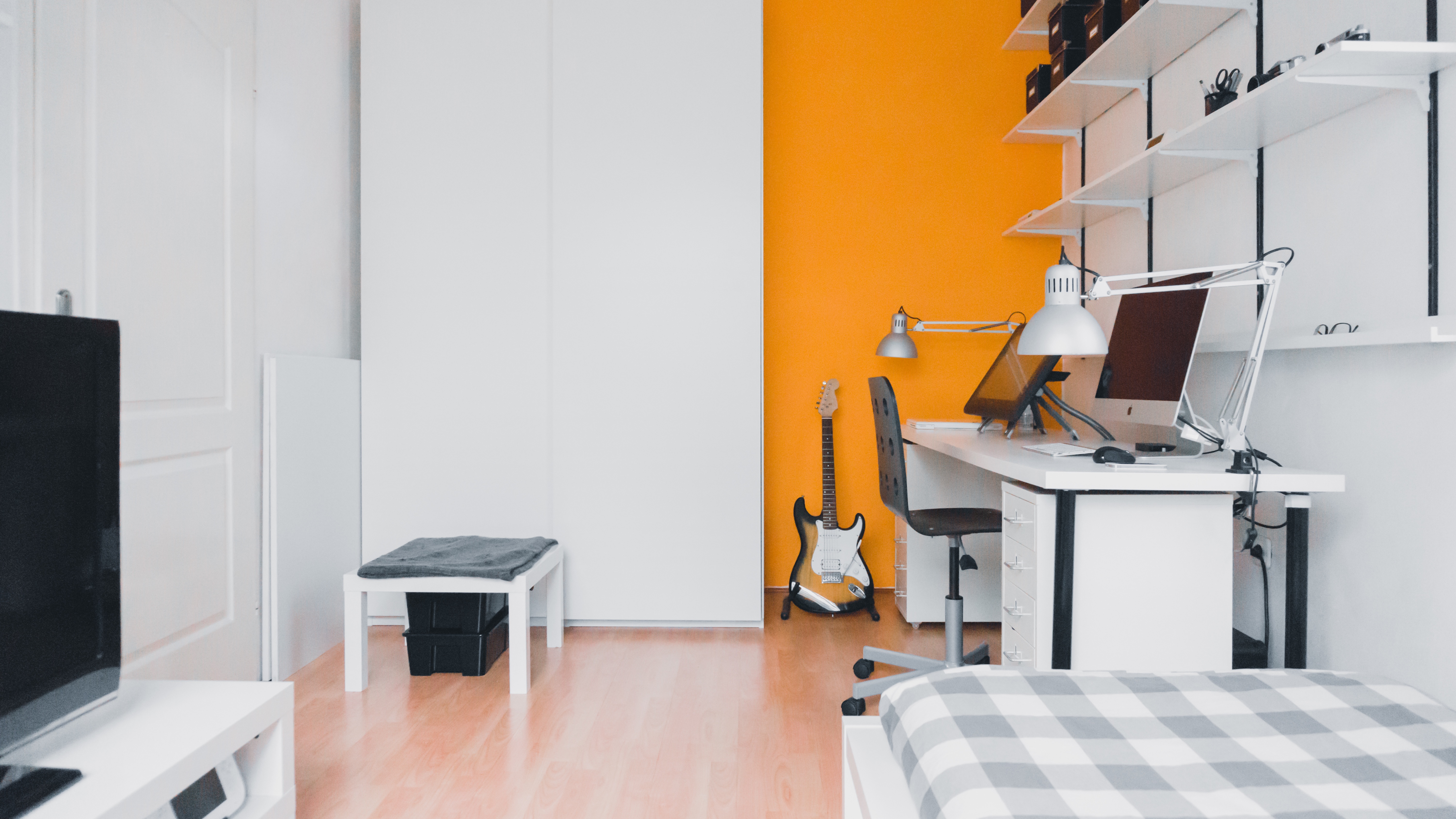
Painting the walls a different colour is visually one of the strongest ways to show where the different zones begin and end. Remember, you don’t have go quite as bold as the orange in this image. Even applying different shades of ‘off-white’ would work to achieve the same effect. You will have to be careful not to over-do it though, applying too many colours in a small area, or you may end up with a living space that looks more confused than ever! Plan out how many zones you want and where you want them to be, then choose colours that are different enough to be defining, but overall complimentary. If in doubt, consult an interior designer for a professional view. Designers have an eye for colour and will be able to recommend a scheme that suits you and your own individual tastes.
If you’re making changes to your home and are looking for some assistance then don’t hesitate to get in touch with Envy Interior Design. We offer a full design package for just £149 per room (RRP £199). To see what’s included in the package just click on the link below…
Online Interior Design Service
Envy Interior Design offers a full design service for £149 per room.
Click here for more details.